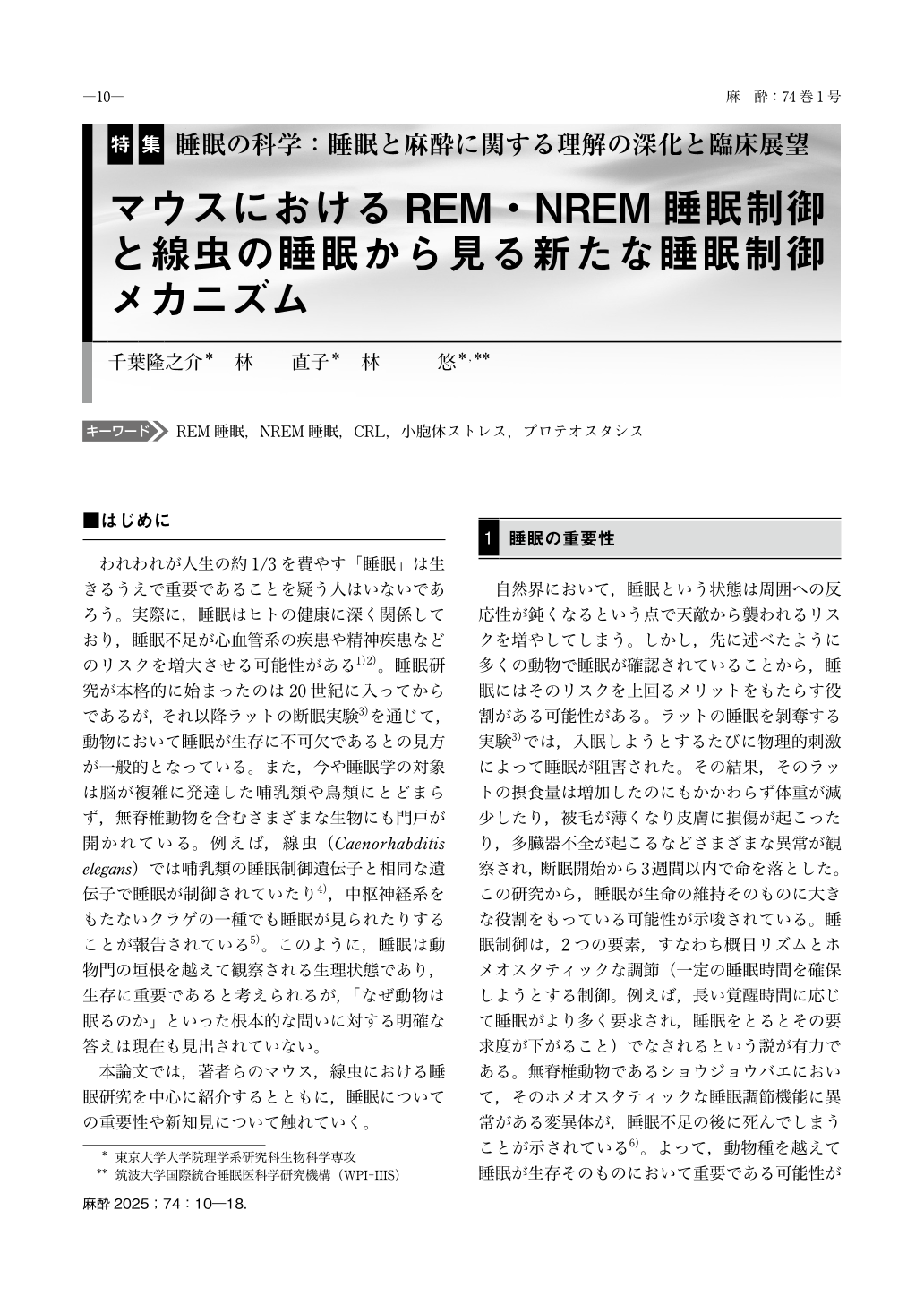Japanese
English
- 有料閲覧
- Abstract 文献概要
- 1ページ目 Look Inside
- 参考文献 Reference
- サイト内被引用 Cited by
はじめに
われわれが人生の約1/3を費やす「睡眠」は生きるうえで重要であることを疑う人はいないであろう。実際に,睡眠はヒトの健康に深く関係しており,睡眠不足が心血管系の疾患や精神疾患などのリスクを増大させる可能性がある1)2)。睡眠研究が本格的に始まったのは20世紀に入ってからであるが,それ以降ラットの断眠実験3)を通じて,動物において睡眠が生存に不可欠であるとの見方が一般的となっている。また,今や睡眠学の対象は脳が複雑に発達した哺乳類や鳥類にとどまらず,無脊椎動物を含むさまざまな生物にも門戸が開かれている。例えば,線虫(Caenorhabditis elegans)では哺乳類の睡眠制御遺伝子と相同な遺伝子で睡眠が制御されていたり4),中枢神経系をもたないクラゲの一種でも睡眠が見られたりすることが報告されている5)。このように,睡眠は動物門の垣根を越えて観察される生理状態であり,生存に重要であると考えられるが,「なぜ動物は眠るのか」といった根本的な問いに対する明確な答えは現在も見出されていない。
本論文では,著者らのマウス,線虫における睡眠研究を中心に紹介するとともに,睡眠についての重要性や新知見について触れていく。
Sleep is a behavior observed across the animal kingdom, and the results of animal and human research indicate that sleep is essential for survival. However, a clear answer to the fundamental question of “why do animals sleep” remains to be found. We investigated the brain stem neurons derived from neuroepithelium called the cerebellar rhombic lip(CRL), which appears temporarily during the embryonic stage in mice. We identified neurons that are involved in the switch between rapid eye movement(REM)and non-REM(NREM)sleep and the switch between wakefulness and sleep. We then succeeded in creating transgenic mice that exhibit a selective inhibition of REM sleep, which suggests that REM sleep may play a role in enhancing the quality of NREM sleep. In addition, research using the nematode Caenorhabditis elegans has revealed that endoplasmic reticulum(ER)stress in peripheral tissues induces sleep. That research identified a strong relationship between peripheral proteostasis and sleep homeostasis, providing clues to the mechanism by which fatigue induces sleep. The further accumulation of knowledge from such research conducted worldwide can be expected to increase the understanding of the roles of sleep.

Copyright © 2025 KOKUSEIDO CO., LTD. All Rights Reserved.


